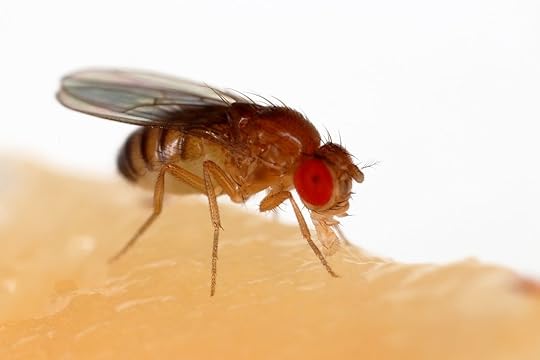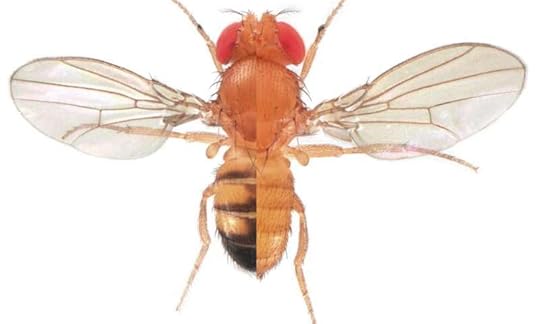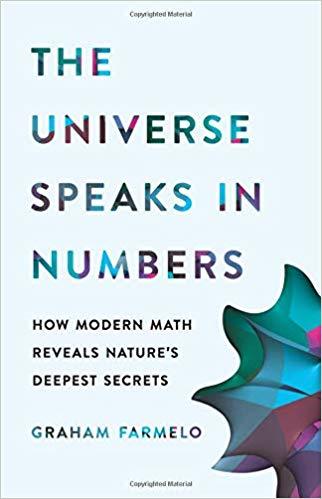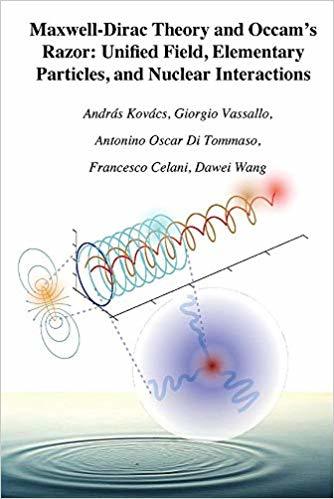Michael J. Behe's Blog, page 457
July 10, 2019
Are our political views coded in DNA? Jerry Coyne is not really convinced
As well he shouldn’t be. An op-ed in the Deep Statesville Intelligence claims,
Given how natural selection works, it’s entirely possible that an aversion to evolutionary explanations is in itself a product of evolution. In a hostile environment, wouldn’t a belief in selfdetermination be adaptive? But no matter, the point is that anti-evolutionary bias makes rational discussion of the human race far more difficult …
The fact that political opinion is rooted to some degree in our genes and biology means that both liberalism and conservatism may be adaptive traits that got passed down through thousands of human generations because they helped us survive. But another trait that is clearly adaptive is our ability to get along. Political arguments may rage within families, communities and even nations, yet they only rarely threaten the cohesion of the group. On some level, humans seem to understand that differences of opinion are unpleasant but splitting up may be even more unpleasant — or downright dangerous. Humans don’t survive alone in nature.
Sebastian Junger, “Our politics are in our DNA” at Washington Post
Like Freud, he’s irrefutable on his own terms. Coyne responds,
First of all, political opinion (or its ancestral equivalent) need not have been selected for directly: they may be “spandrels”—byproducts of differences in brain structure subject to selection for other reasons. Or they could reflect genetic differences that persist but weren’t subject to natural selection at all—they could have been “neutral” traits. After all, do we know whether there was a correlation in our ancestors between political opinion and reproductive output? I don’t think so!
Another problem is why, if the traits persisted because they were adaptive, both liberal genes and conservative genes persisted over aeons? Wouldn’t one worldview be more adaptive than the other, and take over? Only special kinds of natural selection (for the cognoscenti, “frequency-dependent selection” or “balancing selection”), can maintain several forms of a gene in a population.
Junger even suggests some kind of group selection here: politically diverse groups lasted longer, or disappeared less often, than did politically homogeneous groups.
But there’s no evidence for any of these forms of selection; it’s all speculation.
Jerry Coyne, “Are our political views encoded by our DNA?” at Why Evolution Is True
Yes, Jerry, it’s all speculation. Fetch that man a soda!
But now, the question is, why this specific lot of guff just now? This kind of stuff is always floated for a reason.
See also: Jerry Coyne doesn’t like Science Uprising
Jerry Coyne is already mad at Marcos Eberlin
and
Jerry Coyne Blocked On WordPress In Pakistan It’s somewhat like blaspheming against Darwin by airing doubts about his theories in the American school system. But in Pakistan, the death penalty is involved.
Follow UD News at Twitter!
Copyright © 2019 Uncommon Descent . This Feed is for personal non-commercial use only. If you are not reading this material in your news aggregator, the site you are looking at is guilty of copyright infringement UNLESS EXPLICIT PERMISSION OTHERWISE HAS BEEN GIVEN. Please contact legal@uncommondescent.com so we can take legal action immediately.
Plugin by Taragana
The multiverse is just religion, theoretical physicist charges

From Sabine Hossenfelder, author of Lost in Math: How Beauty Leads Physics Astray, This is the fifth and final item in a series on the multiverse:
This is not a polemical argument and it’s not meant as an insult. But believing in the multiverse is logically equivalent to believing in god, therefore it’s religion, not science.
To see why, let me pull together what I laid out in my previous videos. Scientists say that something exists if it is useful to describe observations. By “useful” I mean it is simpler than just collecting data. You can postulate the existence of things that are not useful to describe observations, such as gods, but this is no longer science.
Universes besides our own are logically equivalent to gods. They are unobservable by assumption, hence they can exist only in a religious sense. You can believe in them if you want to, but they are not part of science.
I know that this is not a particularly remarkable argument. But physicists seem to have a hard time following it, especially those who happen to work on the multiverse. Therefore, let me sort out some common misunderstandings.
Sabine Hossenfelder, “Why the multiverse is religion, not science.” at BackRe(Action)
Of course she’s right about the religion part. Much that is going wrong with science today is the tendency to use various science ideas as secular religions.
The multiverse happens to be a particularly devastating one because it strikes at the very idea of evidence. See: The multiverse is science’s assisted suicide
That said, we fear that her target audience actually knows all this and doesn’t care. If they have genuinely imbibed the lessons of the multiverse, all they need do is enforce their ideas as dogma and that is as much truth as will ever exist anyway.
See also: Sabine Hossenfelder Summarizes Multiverse Theories, Asks: Science Or Fiction?
Sabine Hossenfelder: The multiverse is a fringe idea
and
Sabine Hossenfelder On The Flight From Falsifiability
Follow UD News at Twitter!
Copyright © 2019 Uncommon Descent . This Feed is for personal non-commercial use only. If you are not reading this material in your news aggregator, the site you are looking at is guilty of copyright infringement UNLESS EXPLICIT PERMISSION OTHERWISE HAS BEEN GIVEN. Please contact legal@uncommondescent.com so we can take legal action immediately.
Plugin by Taragana
Researchers: Parents’ memory of avoiding danger can be inherited
 fruit fly/Sanjay Acharya (CC BY-SA 4.0)
fruit fly/Sanjay Acharya (CC BY-SA 4.0)In fruit flies, anyway. But it might help us understand addiction over generations of families. From ScienceDaily:
Results of a new Dartmouth study published this week in the journal eLife — which examined how environmental stressors put on fruit flies (Drosophilia melanogaster) can influence the phenotypes of their offspring — are adding some intriguing findings to the mix.
“While neuronally encoded behavior isn’t thought to be inherited across generations, we wanted to test the possibility that environmentally triggered modifications could allow ‘memory’ of parental experiences to be inherited,” explains Julianna “Lita” Bozler, a PhD candidate in the Bosco Lab at the Geisel School of Medicine, who served as lead author on the study.
When exposed to parasitoid wasps — which deposit their eggs into and kill the larvae of fruit flies — Drosophila melanogaster females are known to shift their preference to food containing ethanol as an egg laying substrate, which protects their larvae from wasp infection.
For the study, the fruit flies were cohabitated with female wasps for four days before their eggs were collected. The embryos were separated into two cohorts — a wasp-exposed and unexposed (control) group — and developed to maturity without any contact with adult flies or wasps. One group was used to propagate the next generation and the other was analyzed for ethanol preference.
“We found that the original wasp-exposed flies laid about 94 percent of their eggs on ethanol food, and that this behavior persisted in their offspring, even though they’d never had direct interaction with wasps,” says Bozler.
The ethanol preference was less potent in the first-generation offspring, with 73 percent of their eggs laid on ethanol food. “But remarkably, this inherited ethanol preference persisted for five generations, gradually reverting back to a pre-wasp exposed level,” she says. “This tells us that inheritance of ethanol preference is not a permanent germline change, but rather a reversible trait.” Paper. (open access) – Julianna Bozler, Balint Z Kacsoh, Giovanni Bosco. Transgenerational inheritance of ethanol preference is caused by maternal NPF repression. eLife, 2019; 8 DOI: 10.7554/eLife.45391 More.
The memory only lasted about five generations but the fact that it happens at all is significant.
Note especially: “Of particular interest, are the conserved signaling functions of NPF and its mammalian counterpart NPY in humans,” he says. “We hope that our findings may lead to greater insights into the role that parental experiences play across generations in diseases such as drug and alcohol disorders.” It might help in understanding why many families seem to replay “addiction tapes” into the third and fourth generation.
See also: See also: Epigenetics: Fertilized egg deletes sperm’s epigenetic memory
and
Lamarck was right: How epigenetic memory is passed through generations
Follow UD News at Twitter!
Copyright © 2019 Uncommon Descent . This Feed is for personal non-commercial use only. If you are not reading this material in your news aggregator, the site you are looking at is guilty of copyright infringement UNLESS EXPLICIT PERMISSION OTHERWISE HAS BEEN GIVEN. Please contact legal@uncommondescent.com so we can take legal action immediately.
Plugin by Taragana
July 9, 2019
Researchers: Body plan evolution not so simple as once thought
 /
/ Left side: Drosophila yakuba male fruit fly, right side is a Drosophila santomea male /Eden Wellesley McQueen
The Hox genes are not the big answer many thought:
The role of Hox genes in changing the layout of different body parts during evolution has been challenged by a study led by researchers out of the University of Pittsburgh’s Department of Biological Sciences.
Hox genes are vital to developing differences in repeated body parts such as vertebrae, limbs, or digits in most animal species, including human beings. Ever since their discovery, scientists have thought that modifications to Hox genes could be the primary way that the animal body plan has been altered during evolution.
The paper, “Changes throughout a genetic network masks the contribution of Hox gene evolution,” discusses experiments that pinpoint evolutionary changes in a Hox gene, but found that several other genes had evolved alongside it to generate a difference in pigmentation along the fruit fly body plan. The paper was published in Current Biology June 27. “Body plan evolution not as simple as once believed” at University of Pittsburgh
So Hox isn’t the magic Darwinfix after all. all these genes are coordinating their work, almost like the unrolling of a plan. Maybe exactly like the unrolling of a plan.
Paper. (open access)
See also: genomic: Hoxparadox described (2011)
Follow UD News at Twitter!
Copyright © 2019 Uncommon Descent . This Feed is for personal non-commercial use only. If you are not reading this material in your news aggregator, the site you are looking at is guilty of copyright infringement UNLESS EXPLICIT PERMISSION OTHERWISE HAS BEEN GIVEN. Please contact legal@uncommondescent.com so we can take legal action immediately.
Plugin by Taragana
Why should science need evidence anyway? Why isn’t speculation good enough?

In a review of science writer Graham Farmelo’s of The Universe Speaks in Numbers: How Modern Math Reveals Nature’s Deepest Secrets, we hear that much cosmology is “speculative” rather than merely “conventional” science. We’d thought so but it is nice to hear it confirmed:
In the past, experiments played a vital role in developing theory and vice versa. For some time now that back-and-forth has not existed in certain fields where experiments are barely managing to test theories developed over decades. Wherever experimental data can be coaxed out of nature, it suffices to corroborate or refute a theory and serves as the sole arbiter of validity. But where evidence is spare or absent – as it is for a growing number of questions in physics – other criteria, including aesthetic ones, have been allowed to come into play both in formulating a theory and evaluating it.
Most of this is not conventional science, Farmelo admits. Rather, it is speculative science. But it is science nonetheless because it’s rooted in the two great theories of the 20th century: quantum mechanics and relativity.
Manjit Kumar, “The Universe Speaks in Numbers review – should we believe in a ‘theory of everything’?” at The Guardian
Reviewer Kumar’s thought seems to be, as long as the speculation is rooted in the two great theories, it’s science. A need for evidence is an unreasonable burden.
See also: Sabine Hossenfelder: Can Gravitational Wave Interferometers Tell Us If We Live In A Hologram Universe?
and
Post-modern physics: String theory gets over the need for evidence
Follow UD News at Twitter!
Copyright © 2019 Uncommon Descent . This Feed is for personal non-commercial use only. If you are not reading this material in your news aggregator, the site you are looking at is guilty of copyright infringement UNLESS EXPLICIT PERMISSION OTHERWISE HAS BEEN GIVEN. Please contact legal@uncommondescent.com so we can take legal action immediately.
Plugin by Taragana
Is spacetime granular on the smallest of scales?
And would that help withbig physics problems?:
Spacetime is generally regarded in Einstein’s famous general relativity as perfectly smooth, if curved here and there. But some physicists think that it may actually be granular on the smallest of scales. Like Bagnold, these researchers look beyond the smooth big-scale structures and analyze the effect of each tiny grain. Although this idea is not yet mainstream in the physics community, a recent Physical Review Letter hints that granular spacetime could—just maybe—solve two of the most pressing problems in astronomy today.
“The Sands of Spacetime: Researchers investigate two of physics’ greatest problems” at Physics Central
The problems, of course, are the inconsistency between general relativity and quantum mechanics and the expansion of the universe. And how would granularity help?
To begin with, they reasoned, spacetime would be granular only on the very smallest of scales, far smaller than we could hope to measure. The energy transferred away from matter as a result of this granular structure must be correspondingly minuscule. They also calculated that the amount of energy lost is proportional to density squared; since the modern universe is relatively rarified, current energy losses would be tiny. In fact, the entire planet Earth would take 10 million years to lose the energetic equivalent of a single electron mass through this process! Current technology is nowhere near the capabilities that would be required to measure such tiny effects, and so it would be impossible for researchers to measure in the lab…
“The Sands of Spacetime: Researchers investigate two of physics’ greatest problems” at Physics Central
Interesting idea. The paper is paywalled.
See also: Sabine Hossenfelder: Don’t Expect Too Much From New Proposals To Detect Dark Matter
Follow UD News at Twitter!
Copyright © 2019 Uncommon Descent . This Feed is for personal non-commercial use only. If you are not reading this material in your news aggregator, the site you are looking at is guilty of copyright infringement UNLESS EXPLICIT PERMISSION OTHERWISE HAS BEEN GIVEN. Please contact legal@uncommondescent.com so we can take legal action immediately.
Plugin by Taragana
How many “types of human” “coexisted with our ancestors”?
Cutting-edge techniques, we are told, get us closer to the truth:
It’s well-established that modern humans mingled with Neanderthals and Denisovans. DNA convincingly shows the three lineages interbred in every combo: modern human/Neanderthal, modern human/Denisovan and Neanderthal/Denisovan. And if anthropologists’ interpretations are correct, we also shared the planet with Homo floresiensis, H. naledi and H. luzonensis as well as perhaps some late-surviving H. erectus. Fossils of Homo sapiens and these species overlap in time, but were geographically separated by vast distances. It’s unclear if our ancestors actually set eyes on them. Lastly, genetic patterns suggest a few more lineages in the mix (here, here), which have not yet been linked to physical fossils. For now, they’re known as ghost populations.
That brings us to seven or more types of humans since the dawn of our species, some 300,000 years ago. As a matter of convention, I refer to all Homo species as humans.
Bridget Alex, “Just How Many Extinct Types of Human Did Our Ancestors Meet?” at Discover Magazine
“As a matter of convention, I refer to all Homo species as humans.” What a great idea! We love it!
But what if these “Homo species” were never sharply differentiated groups? Cutting edge techniques might turn up many more such “species”/groups in the near future, comprising a sort of “United Nations” of deceased cultures.
What will that do to Darwinian anthropology? The Descent of Man?
See also: Was Neanderthal man fully human? The role racism played in assessing the evidence
Follow UD News at Twitter!
Copyright © 2019 Uncommon Descent . This Feed is for personal non-commercial use only. If you are not reading this material in your news aggregator, the site you are looking at is guilty of copyright infringement UNLESS EXPLICIT PERMISSION OTHERWISE HAS BEEN GIVEN. Please contact legal@uncommondescent.com so we can take legal action immediately.
Plugin by Taragana
July 8, 2019
Hoover Institution interview with David Berlinski
In 1996. David Berlinski published an article in Commentary, skewering the vast public nonsense that Darwinism had become – and remained for roughly two decades, only now beginning to totter under a variety of assaults. Time to reminisce a bit:
From “The Deniable Darwin”:
The facts in favor of evolution are often held to be incontrovertible; prominent biologists shake their heads at the obduracy of those who would dispute them. Those facts, however, have been rather less forthcoming than evolutionary biologists might have hoped. If life progressed by an accumulation of small changes, as they say it has, the fossil record should reflect its flow, the dead stacked up in barely separated strata. But for well over 150 years, the dead have been remarkably diffident about confirming Darwin’s theory. Their bones lie suspended in the sands of time—theromorphs and therapsids and things that must have gibbered and then squeaked; but there are gaps in the graveyard, places where there should be intermediate forms but where there is nothing whatsoever instead. More.
See also: A fun story involving Berlinski’s journal (where he is now a contributing editor), Inference Review: Inference Review Did NOT Set Out To Make A Fool Of Cosmologist Adam Becker
Follow UD News at Twitter!
Copyright © 2019 Uncommon Descent . This Feed is for personal non-commercial use only. If you are not reading this material in your news aggregator, the site you are looking at is guilty of copyright infringement UNLESS EXPLICIT PERMISSION OTHERWISE HAS BEEN GIVEN. Please contact legal@uncommondescent.com so we can take legal action immediately.
Plugin by Taragana
Researcher: “Environmental crisis” spurs some scientists to believe plants are conscious
Further to: Why do plant scientists need to tell the world that plants are NOT conscious? it appears that over at The Scientist, they’re catching on: A co-author of the recent paper insisting that no, plants are not conscious offers some context:
[Lincoln] Taiz says he thinks that the motivation for plant neurobiologists stems from the environmental crisis. “They want to raise people’s consciousness about plants as living organisms and reach them on an emotional level. I’m very sympathetic to the motivations, but it is clouding their objectivity,” he says to The Guardian.
Chia-Yi Hou, “Botanists Say Plants Are Not Conscious” at The Scientist
Oops. Objectivity is right up there with math as a target in the war on science, Taiz. Stop drawing attention to so vulnerable a quality. 
We are invited to consider a simpler perspective on the laws of physics

In experimental particle physicist Tommaso Dorrigo’s usual space, a guest poster argues for a new theory of electron mass:
This is a swimming test which no theory passed yet, according to Feynman: “Many attempts have been made, and some of the theories were even able to arrange things so that all the electron mass was electromagnetic. But all of these theories have died”. By analyzing the relationship between the Maxwell and Dirac equations, we show that the mysterious “four-component Dirac spinor field” is nothing else than electromagnetic energy-momentum, whose dynamics is described by the Dirac equation. Subsequently, we derive from the model all the essential features of the electron: its mass exactly corresponds to its electromagnetic energy, its charge surface is on a sphere at the classical electron radius, its zitterbewegung (ZBW) radius is the reduced Compton radius (in the rest frame), we derive its relativistic increase of mass, show that its charge surface retains its spherical shape under any Lorentz boost, and obtain its correct magnetic moment and ZBW frequency as well. This resolves the mystery of what the electron mass is “made of”.
In other words, the book explains how electromagnetic fields comprise the electron mass.
Andras Kowacs, “ A. Kowacs, “Is There A Simpler Perspective On Some Fundamental Laws Of Physics?”” at Science 2.0
Kowacs offers his theory in just-published Maxwell-Dirac Theory and Occam’s Razor: Unified Field, Elementary Particles, and Nuclear Interactions
See also: Electron’s Nearly Perfect Roundness Stymies The Search For “New Physics”
Could there be particles smaller than the electron?
and
Microbes that live on electrons
Follow UD News at Twitter!
Copyright © 2019 Uncommon Descent . This Feed is for personal non-commercial use only. If you are not reading this material in your news aggregator, the site you are looking at is guilty of copyright infringement UNLESS EXPLICIT PERMISSION OTHERWISE HAS BEEN GIVEN. Please contact legal@uncommondescent.com so we can take legal action immediately.
Plugin by Taragana
Michael J. Behe's Blog
- Michael J. Behe's profile
- 219 followers



